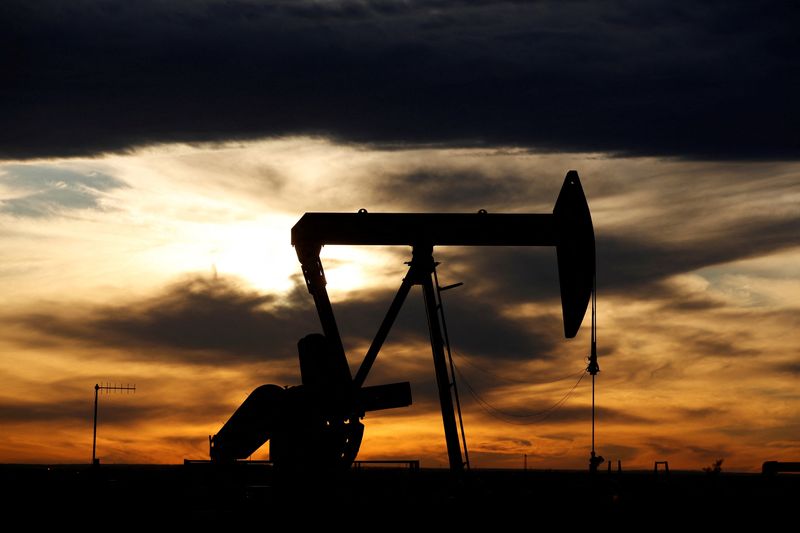
By Georgina McCartney
(Reuters) -Oil prices rose on Wednesday after the European Union agreed a further package of sanctions targeting Russia’s shadow fleet, while a larger-than-expected build in U.S. fuel stockpiles last week curbed gains.
Brent crude futures were up 45 cents, or 0.62%, to $72.64 a barrel by 10:46 a.m. ET. U.S. West Texas Intermediate crude futures rose 61 cents, or 0.89%, to $69.20.
European Union ambassadors agreed on Wednesday to a 15th package of sanctions on Russia over its war against Ukraine, the Hungarian EU presidency said.
“I welcome the adoption of our 15th package of sanctions, targeting in particular Russia’s shadow fleet”, European Commission President Ursula von der Leyen said on X.
The “shadow fleet” has aided Russia in bypassing the $60-per-barrel price cap imposed by the G7 on Russian seaborne crude oil in 2022, and helped keep Russian oil flowing.
U.S. crude futures rose more than $1 per barrel after the sanctions were announced.
Curbing price gains on Wednesday, gasoline and distillate inventories rose by more than-expected last week, according to data from the Energy Information Administration, weighing on crude prices.
Meanwhile, producers’ group OPEC cut its forecasts for demand growth in 2024 and 2025 for the fifth straight month on Wednesday and by the largest amount yet.
“The (OPEC) Secretariat’s estimates continued to play catch up with consensus with further downward revisions implemented in the demand forecasts, reducing year-over-year growth in 2024 and 2025,” said Harry Tchilinguirian, head of research at Onyx Capital Group.
OPEC+, which groups members of the Organization of the Petroleum Exporting Countries with other producers such as Russia, earlier this month delayed plans to start raising output.
Weak demand, particularly in top importer, China, and non-OPEC+ supply growth were two factors behind the move.
However, investors anticipate a rise in Chinese demand following Beijing’s latest plans to boost economic growth.
China said on Monday it would adopt an “appropriately loose” monetary policy in 2025 marking the first easing of its stance in 14 years.
“While past efforts have focused on sectors like electric vehicles and infrastructure, there are expectations that China may shift toward policies to boost consumer spending…this has sparked optimism in the oil market,” said Li Xing Gan, financial markets strategist consultant to Exness.
Chinese crude imports also grew annually for the first time in seven months in November, up more than 14% from a year earlier.

Meanwhile the Kremlin said that reports of a possible tightening of U.S. sanctions on Russian oil suggested the administration of U.S. President Joe Biden wants to leave a difficult legacy for U.S.-Russia relations.
Bloomberg News reported on Tuesday that the U.S. government was weighing harsher sanctions against Russia’s lucrative oil trade, seeking to tighten the squeeze on the Kremlin’s war machine just weeks before Donald Trump returns to the White House.
This post is originally published on INVESTING.


